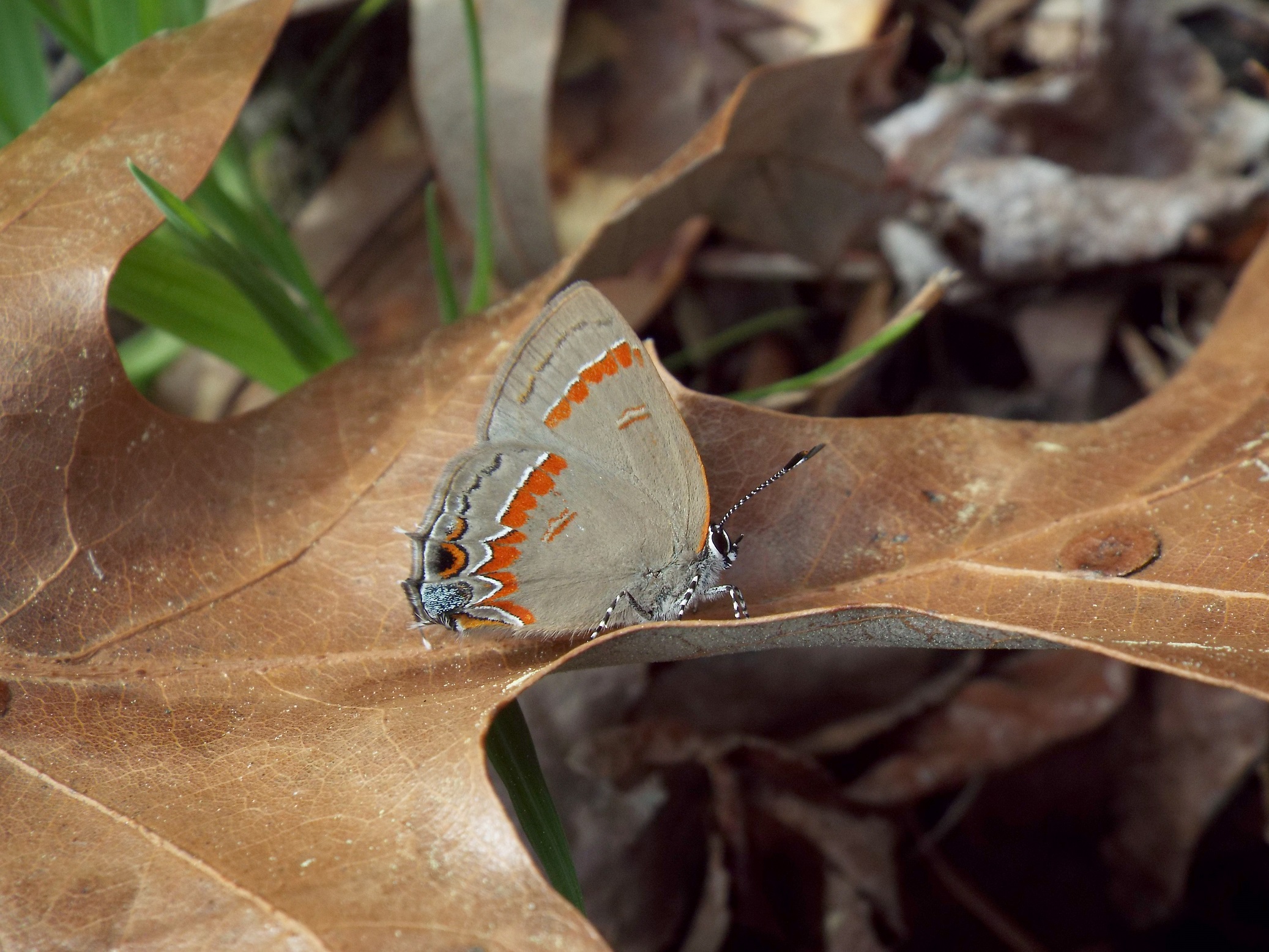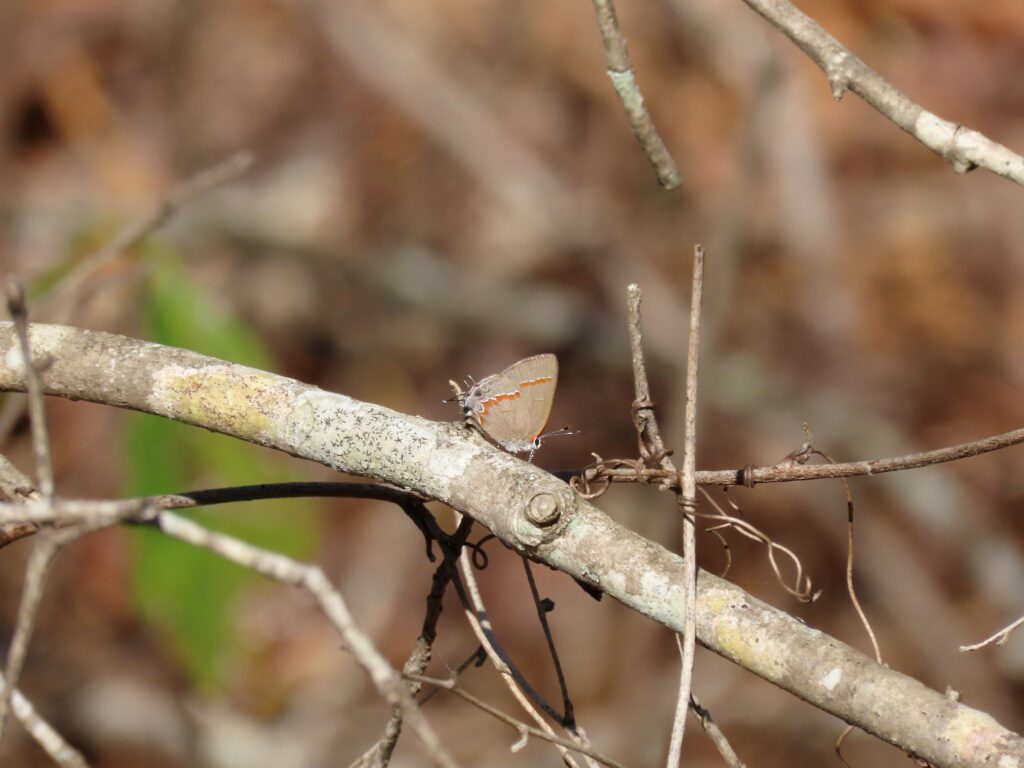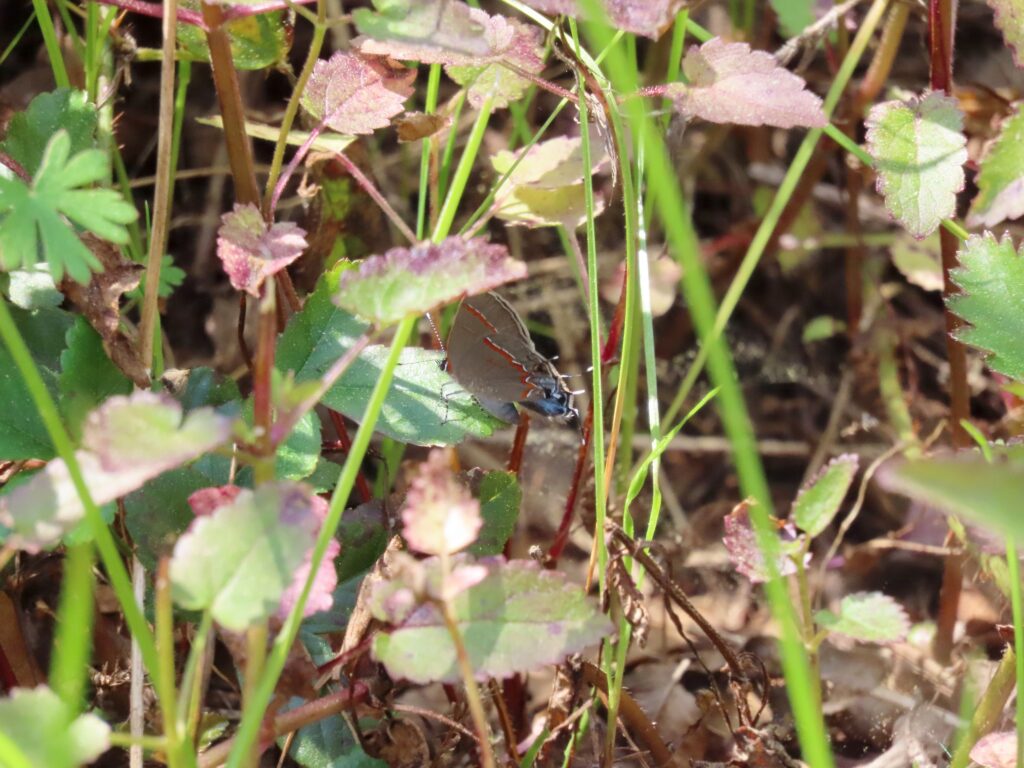





This week for Flora and Fauna Friday we’ve got a dirt common, detritivorous, diminutive butterfly, the Red-banded Hairstreak (Calycopis cecrops).
The Red-banded Hairstreak is found throughout the Southern United States and all of South Carolina. It’s one of our most widespread butterflies in the Carolinas and present in low but consistent numbers almost anywhere you go in the Lowcountry. They’re especially common along forest edges, pond banks, roadsides, powerline clearings, and other brushy areas. The Red-banded Hairstreak is a member of the Gossamer-winged Butterflies, family Lycaenidae, and more narrowly the Hairstreak subfamily, Theclinae. Our classic Hairstreaks all share a similar suite of characteristics that set them apart from other butterflies. Our Red-banded Hairstreak checks all of those boxes.
Red-banded Hairstreaks are small, about the size of a dime. They perch upright with their wings closed and have a triangular in profile. They are slate-gray and iridescent blue above and a warm-gray below with white, black, orange, and blue markings. Their namesake field mark is a heavy red-orange band down the middle of their wings. No other butterfly in the Carolinas boasts the same red band. This band has a sharp black and white margin. Paralleling it is an orange leading edge to their forewing. At the outside bottom of their hindwing is a special defensive pattern, a blue spot flanked on either side by black and orange semicircles and with a double set of “tails” protruding just above. This collection of features mimics their face, at least in the eyes of predatory insects, and draws attention to it. Many Hairstreaks employ this same defense and will slowly rub their hindwings together when perched to better emphasize it. The corner of their hindwings is actually weaker than the rest of their wings, allowing the wing to break off if attacked and the butterfly to fly away scarred but unfettered.
Red-banded Hairstreaks are quite unique as caterpillars too. They’re actually, in a way, detritivores. Rather than feeding on fresh foliage, they feed on the fallen leaves of several shrubs. Female butterflies lay their eggs in the leaf litter beneath these bushes and their young’uns happily munch away on freshly fallen leaves. It’s an ingenious strategy, as it means their larvae are safe from many patrolling insect predators and food is available essentially year-round. Red-banded Hairstreaks primarily host on Wax-Myrtles (Morella spp.) and Winged Sumac (Rhus copallinum). Both of these shrubs are extremely common in the Lowcountry. Thus so is the Red-banded Hairstreak and it can be spotted anytime from March through October. The adult butterflies are particularly fond of small white and yellow flowers for nectar nourishment, particularly Goldenrods, Bonesets, Pepperbush, and members of the Carrot family.